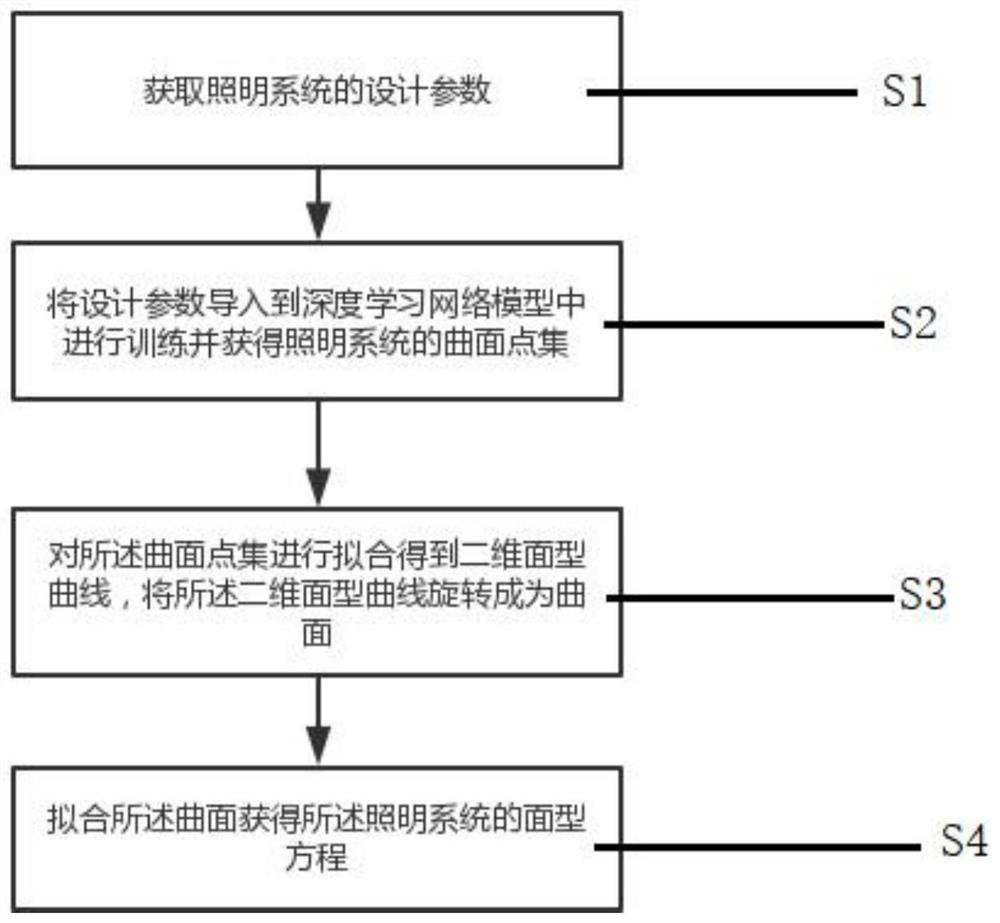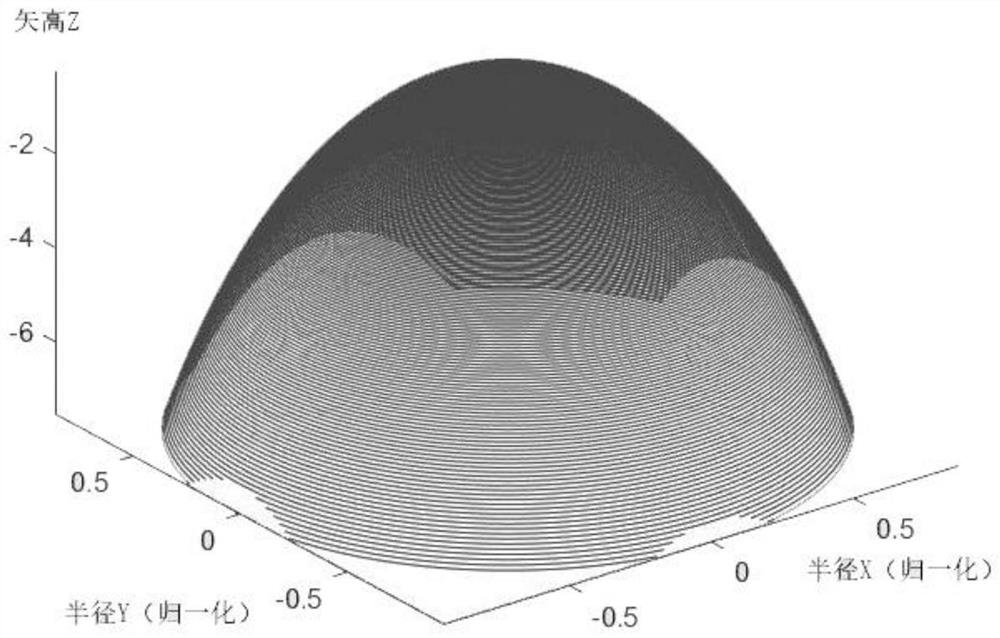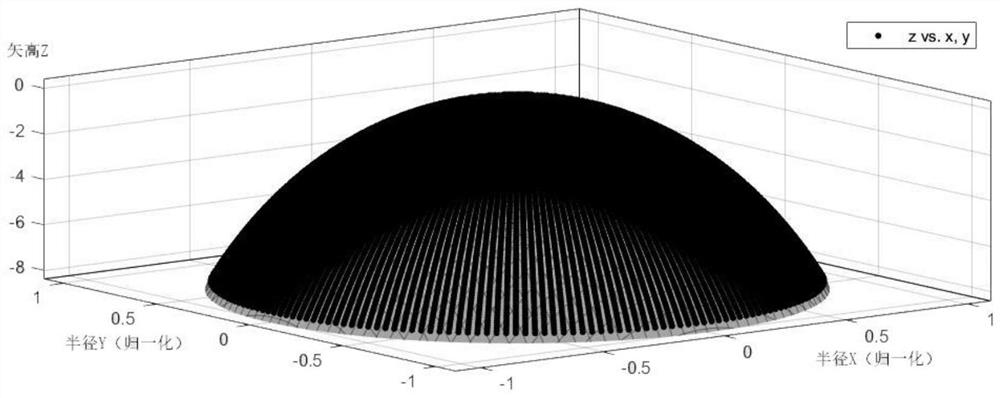Lighting system design method and system based on deep learning
A lighting system and deep learning technology, applied in the field of lighting system design, can solve the problems of reducing the uncertainty of manual design, excessive calculation, and difficult design
- Summary
- Abstract
- Description
- Claims
- Application Information
AI Technical Summary
Problems solved by technology
Method used
Image
Examples
Embodiment 1
[0059] Such as figure 1 A schematic flow chart of Embodiment 1 of a lighting system design method based on deep learning; specifically including:
[0060] S1: Obtain the design parameters of the lighting system;
[0061] S2: Import the design parameters into the deep learning network model for training and obtain the surface point set of the lighting system;
[0062] S3: Fitting the surface point set to obtain a two-dimensional surface curve, and rotating the two-dimensional surface curve into a curved surface;
[0063] S4: Fitting the curved surface to obtain a surface equation of the lighting system.
[0064] The process of specifying design requirements is generally realized through the human-computer interaction interface. On the human-computer interaction interface, the corresponding interface is displayed. The user fills in the design parameters under the guidance of the human-computer interaction interface, and submits the relevant parameters after clicking Confirm. ...
Embodiment 2
[0067] This example includes:
[0068] S1: Obtain the design parameters of the lighting system;
[0069] S2-1: Initialize the deep learning network model; the deep learning network model includes a first neural network;
[0070] S2-2: Train the deep learning network model, input the emission angle set of the simulated light into the first neural network, and the first neural network outputs a height set; the highly concentrated elements are the simulated light the height of the exit point on the curved surface of the lighting system;
[0071] S2-3: Calculate the two-dimensional surface curve intersection set according to the height set;
[0072] S2-4: Determine the target loss function of the deep learning network model;
[0073] S2-5: Calculate a loss value according to the target loss function, and judge whether the loss value is smaller than a predetermined threshold; if so, end the training; otherwise, adjust the structural parameters of the deep learning network model ...
Embodiment 3
[0080] This example includes:
[0081] S1: Obtain the design parameters of the lighting system;
[0082] S2-1: Initialize the deep learning network model; the deep learning network model includes a first neural network;
[0083] S2-2: Train the deep learning network model, input the emission angle set of the simulated light into the first neural network, and the first neural network outputs a height set; the highly concentrated elements are the simulated light the height of the exit point on the curved surface of the lighting system;
[0084] S2-3: Calculate the two-dimensional surface curve intersection set according to the height set;
[0085] S2-4-1: Calculate the normal angle set according to the two-dimensional surface curve intersection point set; the normal angle set in the normal angle set and the emission angle corresponding to the emission angle set satisfy Snell's law ;
[0086] S2-4-2: Calculate and obtain an optical path imaging point set according to the norm...
PUM
 Login to View More
Login to View More Abstract
Description
Claims
Application Information
 Login to View More
Login to View More - R&D
- Intellectual Property
- Life Sciences
- Materials
- Tech Scout
- Unparalleled Data Quality
- Higher Quality Content
- 60% Fewer Hallucinations
Browse by: Latest US Patents, China's latest patents, Technical Efficacy Thesaurus, Application Domain, Technology Topic, Popular Technical Reports.
© 2025 PatSnap. All rights reserved.Legal|Privacy policy|Modern Slavery Act Transparency Statement|Sitemap|About US| Contact US: help@patsnap.com



